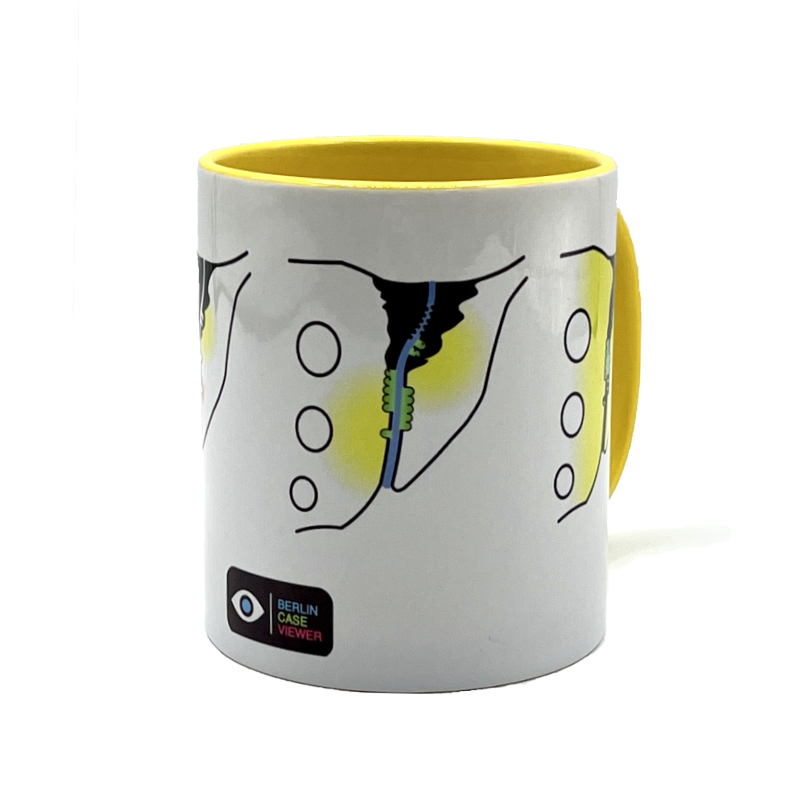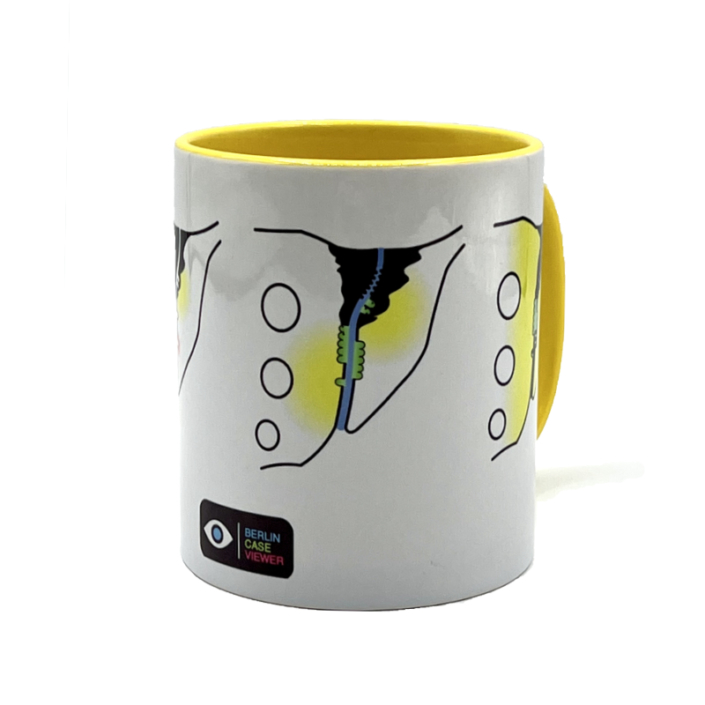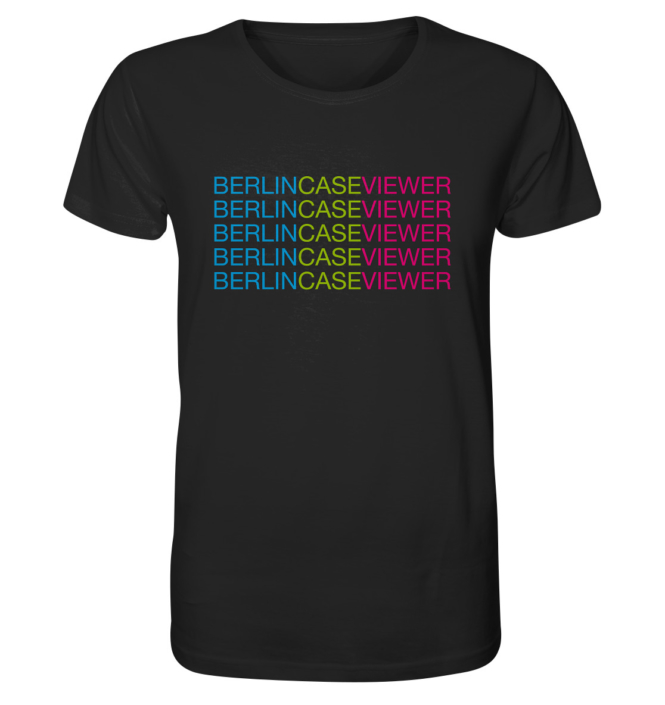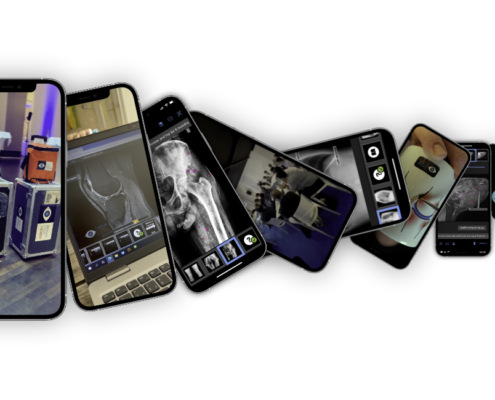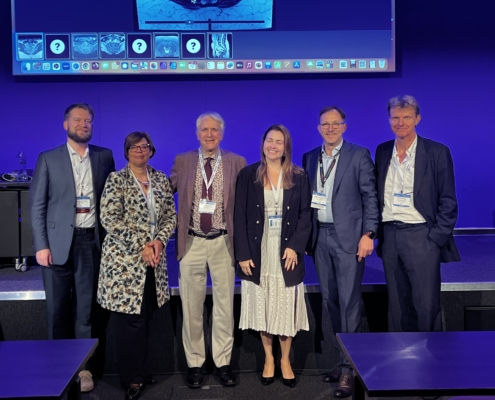Learning Mug For Radiology: Coffee, Cookies and Know-how About axSpA with Sacroiliitis
Maybe last year’s Christmas lecture on spondyloarthritis gave you a taste for presenting or consuming medical knowledge in the form of cookies. In the end, is there a better way to gnaw on information? The only thing missing now is a hot drink accompanying the cookie, because many of us don’t enjoy the pure baked goods, but rather dip them into coffee, tea or milk first. You can find the proper fit for your medical cookie in our shop: the radiology learning mug, which illustrates the radiological findings of certain diseases.
Learning mug shows numerous erosions that lead to a pseudo-widening of the joint space.
Liquid food for thought for radiologists
If you’ve often wondered why the coffee in the radiology department is always gone too soon, a Swiss study now provides the answer: radiologists drink the most coffee after orthopedic surgeons. In fact, many of us live by the motto: “No coffee, no X-rays.” Not to mention MRI and CT images.
Radiologists only work well fueled by coffee. But we can confidently do without disposable cups — also for the sake of the environment. We much prefer to reach for our own personal mug. Ideally, it not only provides liquid nourishment for the nerves, but is also visually appealing enough to keep the mind busy studying.
Hands-on radiology knowledge
This year’s Christmas lecture with radiologist Kay G. Hermann is about this very special radiological mug of your own. By using the learning mug from the BerlinCaseViewer in the video, he explains the course of axial spondyloarthritis with bone changes (sacroiliitis). Four stages of the disease are displayed on the mug. Hit “play” to find out more in the video:
- The disease begins with inflammation of the sacroiliac joints, sometimes already with initial bone damage (erosions).
- Bone sclerosis is clearly visible, and more erosions of the joint are a sign of the disease’s progression. In addition, there are now fat depositions in the bones.
- Further erosions, which are located directly next to each other, lead to a pseudo-widening of the joint space. The first bone buds (ossifications) are visible in the upper area.
- In the case of ankylosis or its preliminary stages, the joint space can hardly be seen; bone sclerosis seems to be decreasing. The fat depositions are clearly pronounced.
With the learning mug from the BerlinCaseViewer, you always have important information at hand when interpreting X-rays, CT and MRI images. In practice, lesions and other typical findings can be explained with a flick of the wrist, and it helps students to grasp the content in a fun way.
That’s why the cup with that certain boost of motivation shouldn’t be missing at work. We may even be able to awaken your passion for collecting. Because the sacroiliitis learning mug is just the beginning. More mugs on rheumatoid arthritis and psoriatic arthritis will be available soon.
Biscuitology: Why we dip biscuits in the first place
Incidentally, as a British study shows, we prefer to dip biscuits and cookies into hot drinks such as coffee to elicit a little more flavor without them falling apart. That is why a formula for the ideal dipping angle was developed in Great Britain:
If you translate this formulaic language into English, you will find: The filling level of the liquid in the mug squared is equal to the surface tension of the drink, multiplied by the pore diameter of the biscuit and the immersion time, divided by four times the viscosity of the drink. In short: This is how you can calculate, at least in theory, how deep and how long you can dip a biscuit into coffee before it starts to crumble. Enjoy!
Download BerlinCaseViewer
Related posts:
This post is also available in: German
